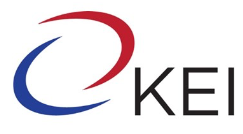1983 Posts located
Asia
1983 Posts located
January 4, 2024
December 19, 2023
November 30, 2023
November 30, 2023
China is India’s largest source of imports, nearly 15 percent of which are sourced from China. Many of India’s major imports—electrical machinery, electronic and semiconductor devices, fertilizers, antibiotics, iron and…
July 30, 2021
This paper assesses the potential for South Korea to be a regional leader in advancing environmental, social, and governance (ESG) investing, and supporting sustainable development in the Asia-Pacific region. Many…
June 28, 2021
South Korean President Moon Jae-in’s New Southern Policy (NSP)—the most recent effort by Seoul to boost relations with Southeast Asian countries and India and diversify its relationships beyond four major…
May 17, 2021
This paper addresses the U.S.-South Korea alliance in the context of Asia’s evolving security architecture. At the crux of the issue is the Biden administration’s desire to uphold the rules-based…
May 17, 2021
Growing up in Tennessee and Alabama, Dr. David Oh never imagined he would one day be leading a mission to explore a metallic asteroid orbiting between Mars and Jupiter. But…
January 24, 2017
In 2017, U.S. Forces Korea (USFK) will complete the move of nearly all troops and support staff from Yongsan Garrison in Seoul to Camp Humphreys, 50 miles south of the…
January 13, 2017
For the first Korean Kontext podcast of 2017, five members of the KEI staff sat down with host Jenna Gibson for a chat about the volitility of 2016 and what…
January 9, 2017
The last several rounds of UN sanctions against the DPRK have been called the "strongest ever," and the new sanctions passed on November 30 are no different. There are some…
December 16, 2016
What Happened On April 19, the South Korean government launched a committee to monitor real estate issues and create new policy suggestions. The creation of the committee follows the ruling party’s defeat in the Seoul and Busan mayoral elections, which many partially attribute to the Moon administration’s inability to control property prices. Rising real estate prices are contributing to increased…
April 29, 2021
Consequent on the UN sanctions that severely restricted essential exports for agriculture to North Korea, starvation conditions have re-emerged for the first time since the famine years of the 1990s. Absent capital and technology, the government relies almost completely on the intensified exploitation of the labor force, much of this carried out via the mechanisms…
April 28, 2021
What Happened On April 12, President Biden met with 19 CEOs to discuss the ongoing semiconductor shortage and to build support for technology as a key component of the infrastructure. The White House promised a USD 50 billion investment in U.S. semiconductor manufacturing, seeking cooperation from global partners. During a similar summit in March, Biden discussed putting technology, such as semiconductors…
April 23, 2021
What Happened During his visit to Iran, South Korean Prime Minister Chung Sye-kyun said that South Korea should “quickly return” the USD 7 billion in Iranian assets frozen as a result of U.S.-led sanctions. PM Chung also expressed South Korea’s willingness to provide Iran with humanitarian aid, and stated that Seoul would be willing to support future negotiations on…
